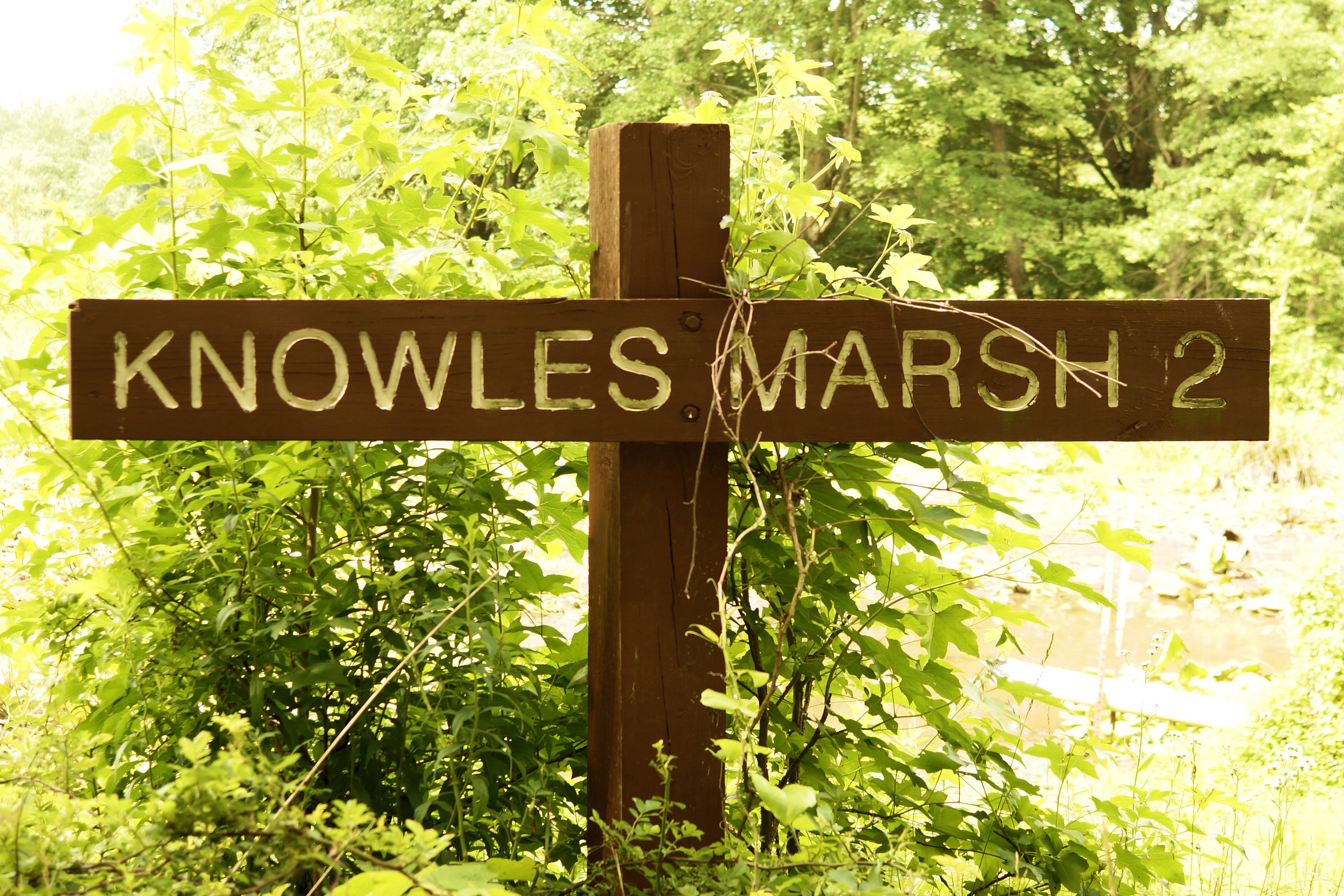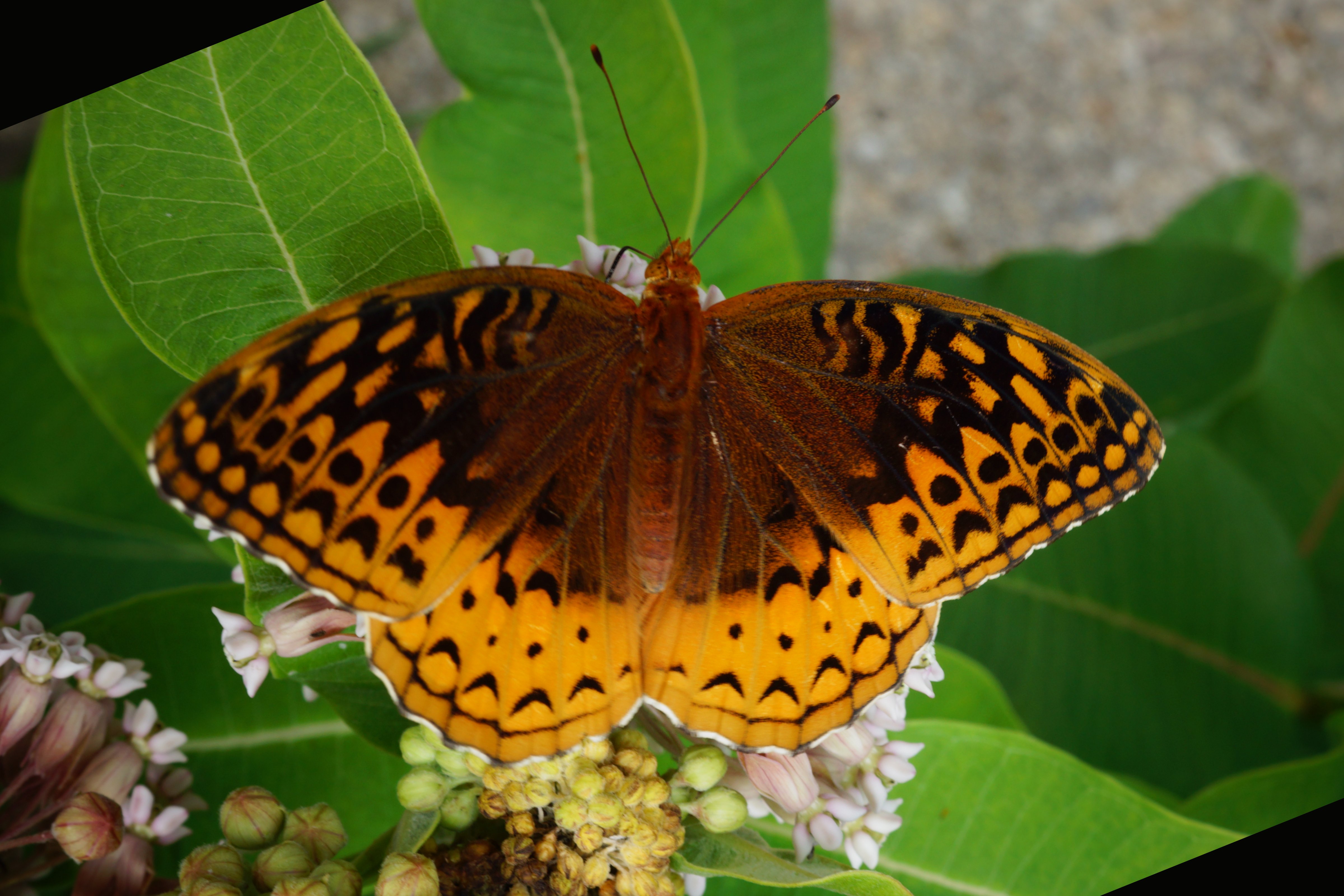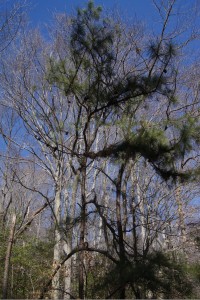
Today, I drove along South Road to see if I could spot a Pitlolly Pine (a hybrid cross between Pitch and Loblolly Pines (Pinus rigida × taeda.)) After examining several possible candidates, about 1/2 mile west of Wildlife Loop I saw one that was easy to photograph and had low hanging limbs with needles. The tree was about 40 feet high and the trunk was about 6 inches in diameter at 4 feet above the ground.
Artificial hybrids of this cross are widely planted and known because of the nursery trade. However, natural hybrid trees are relatively rare, but do occur where the ranges of the two parent species overlap, like those found on the refuge.
In order to determine if this is indeed a hybrid cross between the Pitch and Loblolly Pines we need to look at some traits and compare our findings with what we would expect to see in the two putative parents.
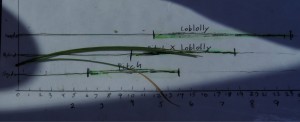
First let’s look at the length of the needles. On this tree, they are 6 to 7.5 inches long, much longer than Pitch Pine needles, which are generally less than 5 inches (only rarely up to 6 inches). At the same time, the needles are on the low end of the range of what we would expect for a Loblolly Pine (5 to 10 inches long.) This means that this is likely not a pure Pitch Pine but could possibly be a Loblolly pine with shorter than average length needles.
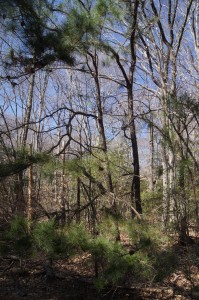
Next let’s look for epicormic sprouting (or needles sprouting directly on the trunk and branches.) This is a diagnostic trait for Pitch Pines, and not for Loblolly Pines. And yes, we see clumps of needles on the branches, but not as much as you normally expect to see on a typical Pitch Pine. So, the plot thickens as this is not a Loblolly Pine, and we can say with a some degree of confidence that this at least part Pitch Pine and part some other species, like Loblolly Pine.
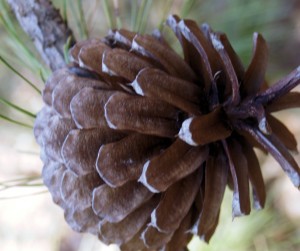
We will now look at the pine cones. On a typical Pitch Pine, they are about 1.25 to 2.5 inches long and about as broad as they are long. For the Loblolly Pine, they are between 2 to 5 inches long and much longer than broad. On our chosen tree, they are about 2.5 to 3.5 inches long and about as broad as long. This means that the cones tend to look like Pitch Pine cones, but are larger on the average, but not as large on the average as Loblolly Pine cones.
So what can we conclude? In my opinion, this tree is a hybrid cross because a number of its traits are intermediate between the two parent trees, and at the same time, some traits tend towards one parent and other traits tend towards the other parent. Furthermore, both of the parent species are present in the area.
This particular hybrid cross was first identified in the 1930’s when dendrologists in California cross-pollinated the two parents and produced viable seeds. In the 1950’s, two South Korean dendrologists bred the hybrid on a large scale for planting because it was very vigorous.
Since then, botanists have located natural hybrids at a small number of sites where the two parent species’ ranges overlap, like here on the Refuge. I will spend some time in the next few days to see how many of these fascinating trees I can identify.



